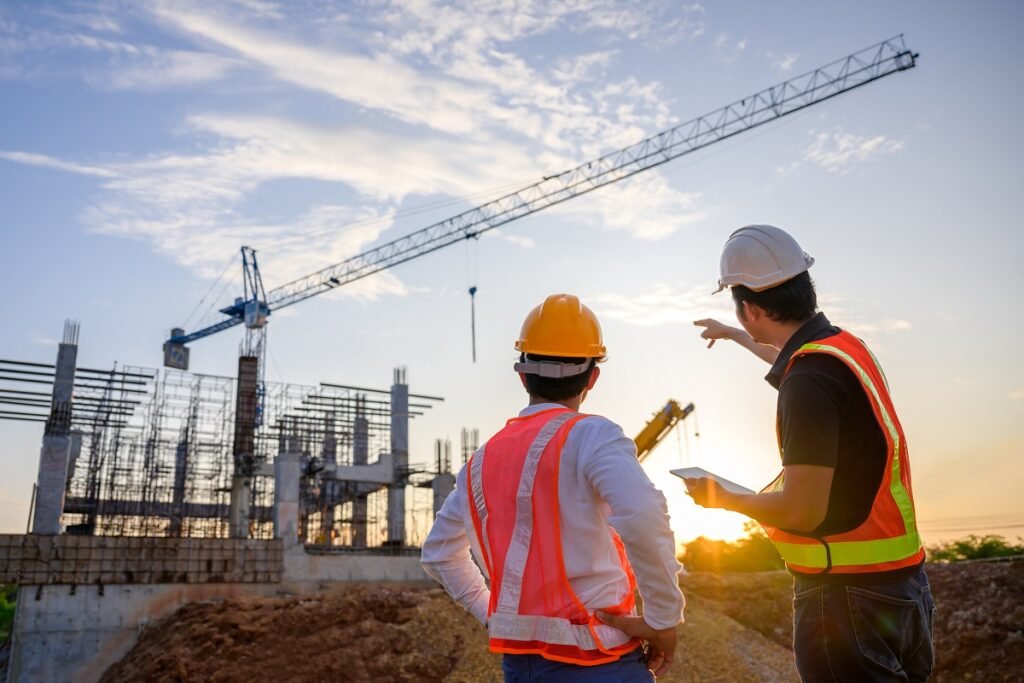Construction projects in Saudi Arabia face serious environmental challenges during the hot season. With temperatures regularly crossing 45°C, the extreme heat affects labor productivity, material performance, equipment reliability, and project timelines. However, with smart planning and climate-specific strategies, it’s possible to maintain efficiency, ensure worker safety, and keep construction progress on track.
Strategic Work Scheduling
Shift Construction Hours to Cooler Times
One of the most effective ways to avoid heat-related delays is to adjust work schedules. Construction teams should start early in the morning or late in the evening to avoid the midday sun, when temperatures are at their peak.
Use Split Shifts for Better Productivity
Splitting shifts into early morning and post-sunset hours allows teams to work during cooler periods without exhausting workers. This approach helps maintain daily productivity while reducing the risk of heat exhaustion.
Worker Safety and Well-Being
Provide Hydration and Cooling Stations
Access to clean drinking water, electrolyte solutions, and misting fans should be mandatory on-site. Hydration stations help prevent fatigue and improve focus.
Establish Shaded Rest Areas
Designated shaded rest areas allow workers to recover from heat exposure. Frequent short breaks in these zones help maintain energy levels and reduce medical risks.
Monitor Health Conditions Proactively
Site supervisors should be trained to recognize early symptoms of heat-related illnesses. Monitoring body temperature, sweating, and energy levels can help intervene before conditions worsen.
Material Performance Under Extreme Heat
Select Heat-Resistant Materials
Some materials, like concrete and adhesives, can react poorly in high temperatures. Choosing materials that are designed for fast-setting or hot-weather performance helps maintain construction quality.
Consider Prefabrication
Prefabricated components reduce the need for complex on-site work. Assembling pre-made elements on-site shortens exposure to harsh conditions and improves safety and quality control.
Equipment Care and Efficiency
Protect Machinery from Heat Damage
Heavy machinery can overheat when exposed to prolonged sunlight. Keeping equipment shaded when not in use, and checking coolant levels frequently, helps prevent unexpected breakdowns.
Increase Maintenance Frequency
High temperatures can accelerate wear on hydraulic systems and engines. A more frequent maintenance schedule during summer ensures machines remain reliable throughout the project.
Leveraging Technology On-Site
Use Remote Monitoring Tools
Technologies like environmental sensors, GPS trackers, and automated alerts allow supervisors to monitor site conditions in real-time without exposing workers to the heat.
Deploy Wearable Safety Devices
Smart wearables can track body temperature, heart rate, and hydration levels. These tools help detect fatigue and stress, triggering alerts before incidents occur.
Budgeting and Risk Management
Allocate Funds for Heat Mitigation
Heat protection measures—such as cooling systems, water supplies, and additional breaks—must be budgeted in advance. This helps avoid last-minute expenses and project delays.
Build Contingency into Timelines
Summer heat can disrupt supply chains, labor availability, and construction speed. Project schedules should include buffers to absorb unplanned interruptions caused by weather.
Sustainable and Passive Cooling Design
Implement Shading and Airflow in Temporary Structures
Temporary offices, storage areas, and worker housing should be designed with natural shading, cross ventilation, and reflective materials to reduce indoor temperatures.
Learn from Regional Design Solutions
Traditional architecture in hot climates includes design features that minimize heat gain and maximize airflow. Incorporating these into construction site planning enhances both comfort and efficiency.
Conclusion
Construction during Saudi Arabia’s hot season comes with undeniable challenges, but they can be managed with the right strategies. From scheduling and hydration to equipment care and smart design, proactive planning allows projects to move forward efficiently without compromising safety or quality. Embracing heat-specific construction practices ensures not only smoother operations during summer but also long-term resilience for the built environment.







